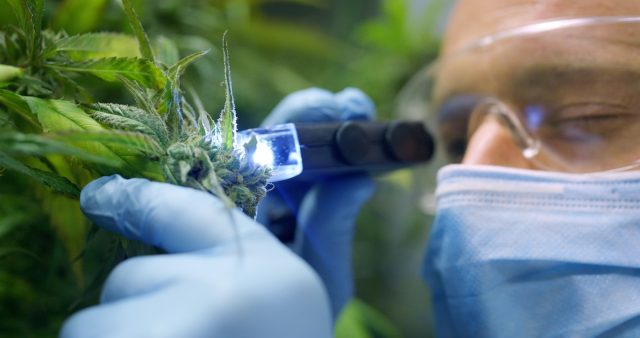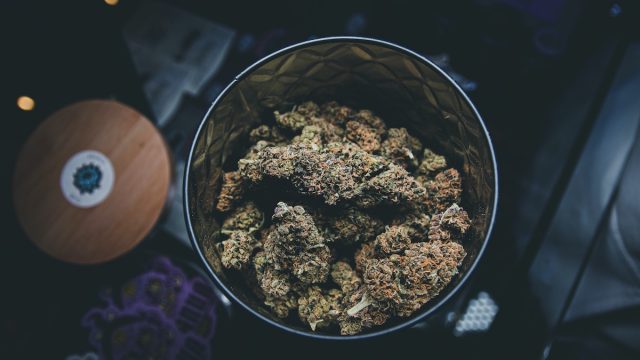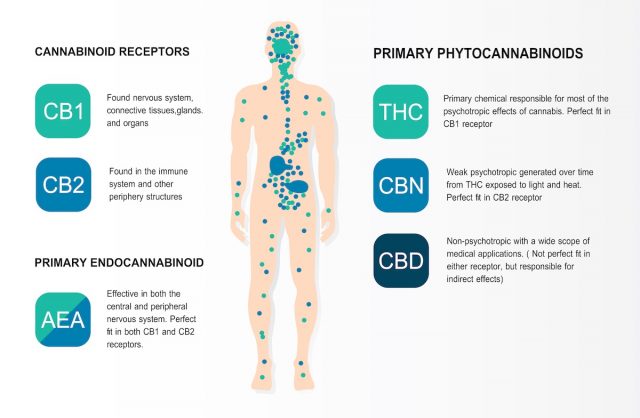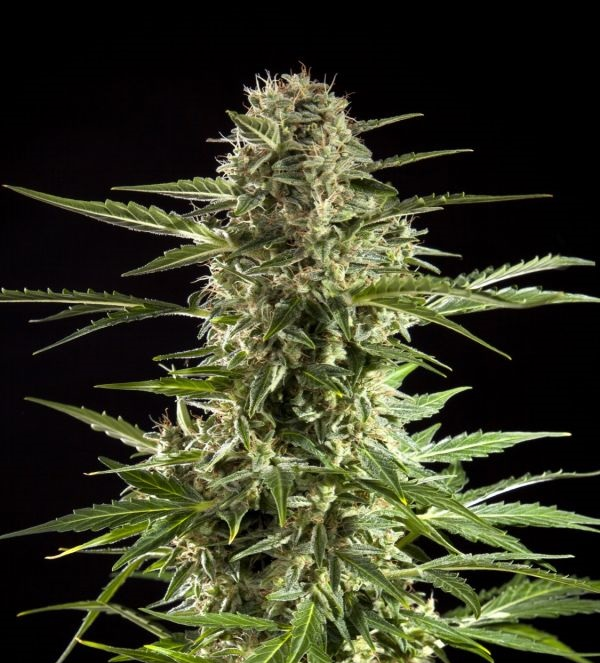CBN (cannabinol): a minor cannabinoid with great potential
List of contents
Cannabinol (CBN) is one of the least known cannabinoid compounds compared to others present in cannabis. Despite the fact that CBD and THC have been the best researched, CBN was actually the first cannabinoid to be isolated by scientists at the end of the 19th century, although its chemical synthesis first occurred in 1940. However, despite its age, only recently has CBN received some attention due to its purported ability to induce sleep and aid relaxation.
CBN forms naturally when THC is exposed to light and heat, situations that cause oxidation. Since CBN derives from THC, they both have a similar molecular structure: THC even has 'cannabinol' in its name (tetrahydrocannabinol). Specifically, prolonged exposure to air (oxidation) causes the THCA molecule contained in fresh cannabis to convert to CBNA. In turn, if the acid form of cannabinol (CBNA) is subjected to heat or ultraviolet rays, it will convert to CBN, the active form of the compound.
And since CBN is created as cannabis ages (it is the best-preserved cannabinoid found in ancient Chinese graves that are thousands of years old), in the past this cannabinoid has typically been associated with old or poorly dried/cured cannabis, which has led to it having somewhat of a bad rap, as it may not get you as high as you'd like, giving you a more narcotic sensation instead.
You can also obtain more CBN by cutting the plant at a more advanced stage of maturation, waiting until the trichomes have gone from their typical milky white colour to a more amber hue, as when the trichomes degrade or oxidise they turn this shade.

Can CBN really treat insomnia?
Although there are numerous experiences that report CBN helping people fall asleep faster and stay asleep longer (there are also numerous products that claim to aid sleep with CBN) the link between the two is unfounded in science, as there are very few studies documenting its ability to do so.
In fact, only one (well-cited) study has indicated that this effect occurs, and under particular conditions. The results suggest that sedation only occurs when CBN is used in combination with THC, a finding that could be attributed to the phenomenon known as the 'entourage effect', in which cannabinoids work synergistically with each other, as well as with other components (such as terpenes and flavonoids), to create a more intense effect.
Where does the alleged connection between CBN and sleep come from?
Quite a few consumers claim that they feel tired and sleepy after smoking old or poorly stored buds. The sedative effects of aged cannabis are often mistakenly attributed to CBN due to the degradation process described above. However, the narcotic effects are more likely due to other plant components that change as cured cannabis increases in age.
According to some experts, aged cannabis tends to be more sedative due to the loss of monoterpenes and the retention of sesquiterpenes, which have a soporific (or drowsy) effect. The addition of another cannabinoid, CBN in this case, can increase the aforementioned entourage effect, but CBN has not been shown to be a sedative on its own. Some researchers even argue that it is no more sedating than other cannabinoids.

Cannabis remains an important sleep aid
While CBN alone may not have sedating effects, it is possible that its synergistic effects with THC could be harnessed to induce sleep as described. For example, the best-known way to use cannabis for sleep is to combine THC with other sedative components, such as the terpenes myrcene and linalool.
Another misconception about CBN is that products high in CBN are not psychoactive. Once we consume CBN, it binds to the CB2 and CB1 receptors of the endocannabinoid system, although in the case of the latter not as strongly as THC would. However, unlike CBD, CBN has been found to be slightly psychoactive, although much less so than THC due to its low interaction with CB1 receptors (around 10% compared to THC).
CB1 receptors are the ones that react producing euphoric psychotropic effects, and CBN has a low affinity for them due to its structure. CBN just doesn't fit CB1 receptors as well as THC. While CBN by itself is not intoxicating, it can actually increase the euphoric effects of THC. So if you're looking to reap the benefits of CBN without getting high, make sure to use products that don't contain a lot of THC.
Treating Insomnia with Cannabis
Did you know that cannabis can be a powerful remedy for insomnia if used correctly? Often more powerful than pharmaceutical drugs cannabis has remarkable sedative properties. Find out more at Philosopher Seeds!

Other therapeutic effects of CBN
Since CBN is a cannabinoid, and as such interacts with our endocannabinoid system, it also has many other uses similar to the way CBD helps with multiple ailments. This broad effect of cannabinoids is due to the fact that the endocannabinoid system is ubiquitous in human physiology, so every time they are taken in different amounts it will have quite broad results.
So CBN, like CBD, could be used as a skin topical because it has been shown to decrease the production of keratinocytes, which can help with scaly skin. CBN might also help stimulate appetite, according to a 2012 study that found that CBN increased appetite in rats, while CBD did the opposite. CBN may also help with glaucoma, according to a 1984 study that claimed it reduced intraocular pressure in laboratory cats.
CBN might even help protect brain cells from the ageing process, according to a recent study from the Salk Institute Molecular Neurobiology Laboratory in California published in February 2022.
The main route of cell death is through oxidative injury. This is often followed by neurological disorders in elderly people. This new study describes how cannabinol can protect brain cells, also called nerve cells, from the damaging effects of this pathway.
The findings of this trial were published in the journal Free Radical Biology and Medicine. And the detailed report implies that cannabinol could be an effective drug to treat or control age-induced neurodegenerative diseases such as Alzheimer's. In fact, scientists suggest that CBN has a high potential to protect our nerve cells as we age.
This study on CBN from the Salk Institute points to the need for more research on less studied cannabinoids, minor cannabinoids that have so far shown little therapeutic potential due to the limited levels of research conducted. Although some of the therapeutic benefits that CBN possesses, as suggested by anecdotal evidence, include pain relief, stress relief, and anti-inflammatory effects.
Like other phytocannabinoids, cannabinol (CBN) has demonstrated therapeutic properties relevant to a large number of pharmaceutical targets.

How to find cannabis products with CBN
While CBN is not very abundant in fresh or dried cannabis, it can often be found in aged cannabis, particularly cannabis that has been exposed to a lot of oxygen. But within cannabis, CBN is not present in such high amounts as THC and CBD, as most plants contain around 1% or less of CBN. Therefore, there are no CBN-rich varieties. And its presence is actually acheived by curing, degrading, or vaporising it. However, it is possible to use fractional distillation to increase CBN concentration by up to 60% or more, just as it is being done with CBD oils.
Still, leaving cannabis out in the open might not be the best way to get CBN. Brands are beginning to offer products with isolated CBN, usually in the form of tinctures or edibles (and, ironically, marketed as sleeping pills). These pure CBN products are a good way to try this cannabinoid for yourself and see if it really is as useful as suggested by the few studies that have examined a compound that is, by all accounts, set for great things within the world of medical cannabis.
-----
References:
- Intraocular pressure, ocular toxicity and neurotoxicity after administration of cannabinol or cannabigerol. Brenda K. Colasantia, Charles R. Craig, R.David Allara.
- Cannabinol and cannabidiol exert opposing effects on rat feeding patterns. Jonathan A Farrimond, Benjamin J Whalley, Claire M Williams.
- Cannabinol inhibits oxytosis/ferroptosis by directly targeting mitochondria independently of cannabinoid receptors. Zhibin Liang, David Soriano-Castell, Devin Kepchia, Brendan M Duggan, Antonio Currais.






